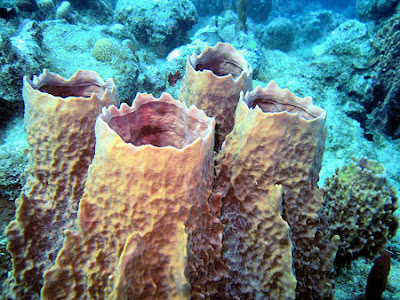Submerged springs along the Yucatan coast may offer a hint of what the coral reefs will look like in coming decades, as global warming inexorably increases concentrations of carbon dioxide in the world’s oceans.
The naturally low pH (a measure of acidity) in the water around the
springs creates conditions similar to those that will result from the
widespread acidification of surface waters that scientists expect to
occur as the oceans absorb carbon dioxide from the atmosphere.
A team led by scientists at the University of California, Santa Cruz,
has been studying the submarine springs at Puerto Morelos near the
Mesoamerican reef for the past three years.
In a paper published online Nov. 20 in the the journal Coral Reefs,
the researchers reported that they found small, patchily distributed
colonies of only a few species of corals, without the structurally
complex corals that compose the framework of the nearby Mesoamerican
Barrier Reef, one of the Caribbean’s largest coral reef ecosystems.
“This study has some good news and some bad news for corals,” said
coauthor Adina Paytan, a research professor in the Institute of Marine
Sciences at UC Santa Cruz. “The good news is that some species of corals
are able to calcify and grow at very low pH. The bad news is that these
are not the ones that build the framework of the coral reefs. So if
this is an indication of what will happen with future ocean
acidification, the reefs will not be as we know them today.”
The submarine springs, known as “ojos,” occur along the eastern coast
of the Yucatan Peninsula. Limestone “karst” landforms near the coast
feature underground drainage systems that discharge brackish water at
the ojos. The discharged water has lower pH than the surrounding
seawater, and these conditions have existed for thousands of years.
Lowering the pH affects the chemical equilibrium of seawater with
respect to calcium carbonate, reducing the concentration of carbonate
ions and making it harder for organisms such as corals to build and
maintain structures of calcium carbonate.

No comments:
Post a Comment